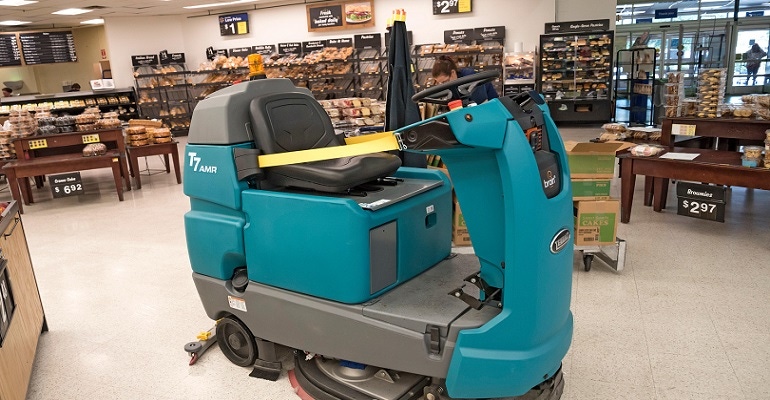Autonomous Mobile Robots Flood the Factory Floor
As autonomous mobile robots gain in sophistication, they are becoming more useful in manufacturing.
December 14, 2021

Autonomous mobile robots (AMRs) have been driving change in warehouses for years. Now they are making their mark on the factory floor. Manufacturers are using AMRs for moving materials, picking, and sorting. AMRs are delivering reliability in handling raw material and manufactured items across production facilities.
Emerging technology has given AMRs greater capability. They’re now equipped with a variety of sensors and they’re directed by fleet management software that enables safe navigation through workers and equipment. AMRs have gained significant traction in China’s manufacturing plants. Now they’re making their way into factories in North America as well.
The AMR Market Is Growing
Research from Interact Analysis shows that mobile robot revenues and shipments grew significantly in 2020 compared to 2019. Even with COVID-19 delays in commissioning and the postponing of projects, sales continued to grow. Interact Analysis sees even greater growth ahead for the AMR market with 2.1 million mobile robots due to be shipped by the end of 2025.
Another research firm, Magna Intelligence, pegs the global market for AMRs at 2.0 billion USD in 2020. The firm projects the AMR market to reach $7.4 billion by 2028, growing at a rate of 18.0% over the next seven years. Many of those AMRs are now going onto the factory floor.
AMRs Are Well Suited to the Factory Floor
In a recent post on Interact Analysis, senior research director Jan Zhang explained why AMRs are moving into manufacturing. “AMRs are making major inroads into factories. And it is important that AMR vendors are conscious of the rapidly growing opportunities in manufacturing because there are strong reasons why AMRs are well suited to modern factory environments,” said Zhang. “Right now, it is Chinese factories that are furthest ahead in recognizing the potential of AMRs. But this is a global trend and AMRs will soon be ubiquitous on factory floors around the world.”
The AMRs deployed in China tend to be utilized by new manufacturing sectors. “When it comes to new industries in China, there has been explosive growth in advanced manufacturing sectors such as photovoltaics, batteries, and electronics – specifically 3C and semiconductor – manufacturing,” said Zhang. “All these sectors are also becoming major users of AMRs.”
The functions of the AMRs on the factory floor are typically more complex than the functions of warehouse AMRs. “For AMRs to operate in factories they must usually be highly customized, and they must meet much more stringent safety and accuracy requirements,” said Zhang. “Additionally, manufacturing operations have an increasing need for flexibility as factories respond to growing demands for mass customization.”
About the Author(s)
You May Also Like




